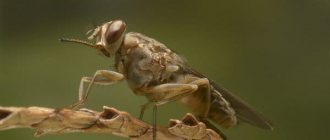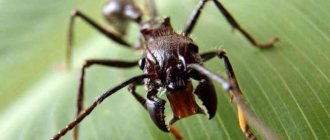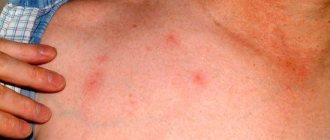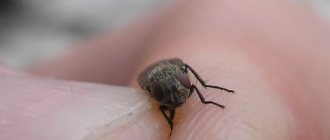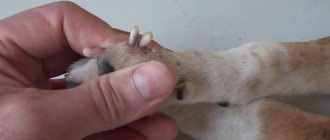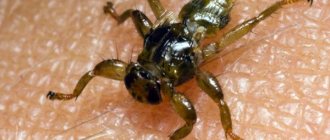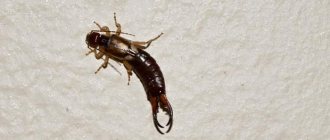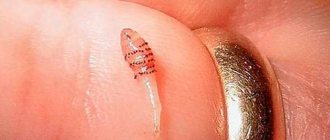Human African trypanosomiasis, also known as sleeping sickness, is a vector-borne parasitic disease. Its causative agents are parasitic protozoa belonging to the genus Trypanosoma. They are transmitted to humans by the bite of a tsetse fly (genus Glossina), infected from humans or animals that act as hosts of these parasites that are pathogenic to humans.
The tsetse fly is found only in sub-Saharan Africa, and only a few species can transmit the disease. For currently unknown reasons, cases of sleeping sickness are not reported in many areas of the tsetse fly's habitat. Residents of endemic rural areas engaged in agriculture, fishing, livestock raising and hunting are most susceptible to tsetse fly bites and, consequently, to this disease. Cases of the disease can occur both in individual villages and in the entire region. Within a single infected area, the intensity of the spread of the disease can vary greatly from one rural settlement to another.
Forms of human African trypanosomiasis
Human African trypanosomiasis has two forms depending on the type of pathogen:
- Trypanosoma brucei gambiense is found in 24 countries in West and Central Africa. Infection with this type of parasite (currently 95% of all reported cases of sleeping sickness) results in chronic infection. A person can carry the infection for many months or even years without showing any serious signs or symptoms of the disease. Often more severe symptoms occur at a later stage of the disease, when the central nervous system is affected.
- Trypanosoma brucei rhodesiense is found in 13 countries in Eastern and Southern Africa. Infection with this type of parasite (currently accounting for less than 5% of reported cases of sleeping sickness) causes an acute infection. The first signs and symptoms appear several months or weeks after infection. The disease develops rapidly with damage to the central nervous system. Uganda is the only country where both forms of the disease occur, although their distribution areas do not coincide.
There is another form of trypanosomiasis that occurs primarily in Latin America. It is known as American trypanosomiasis or Chagas disease. The causative agent of Chagas disease belongs to a different subgenus of Trypanosoma, is transmitted by other vectors and causes a disease whose clinical manifestations differ from human African trypanosomiasis.
What does a tsetse fly look like?
Tsetse fly
The body of a tsetse fly consists of three parts: the head, thorax and abdomen. The size of individuals is 9-14 mm. The fly has large compound eyes of a dark brown color on its head. The organs of vision are clearly separated from each other.
The fly's thorax consists of three segments fused together. The tsetse fly is reddish-gray in color and has four brown longitudinal stripes on its back. Three pairs of legs and wings extend from the chest.
The insect's abdomen is short and wide. An insect can drink blood equal in size to its own weight. After she drinks blood, the abdomen increases in size. Females have a uterus in their abdomen; it is large in size and can accommodate a third instar larva.
The fly's mouthparts consist of a hard lower lip with a sharp tongue and an elongated upper lip. After it pierces the skin, the fly injects saliva into the victim, which prevents the blood from clotting.
The tsetse fly is different from a regular fly; it has the following characteristic features:
- hard proboscis directed forward;
- transparent wings with an axe-shaped vein pattern;
- short antennae with hairs, forked at the ends;
- wings folded one on top of the other at rest.
Animal trypanosomiasis
Other species and subspecies of parasites of the genus Trypanosoma are pathogenic for animals and cause trypanosomiasis in some species of wild and domestic animals. Trypanosomiasis in cattle is called Nagana. Trypanosomiasis in domestic animals, especially cattle, seriously undermines the economic development of infected rural areas.
Animals can harbor parasites pathogenic to humans, especially Tb rhodesiense, with domestic and wild animals being important reservoirs for the latter. Animals can also be infected with Tb gambiense and may also act as reservoirs, although to a lesser extent. However, the actual role of the animal reservoir in the epidemiology of the Gambian form of the disease is still not well understood.
First aid
Multiple injuries are the most painful: if the legs, arms, stomach and other parts of the body are bitten by a fly, inflammation develops. The bite causes swelling of the soft tissues and can worsen overall health. Wounds are treated with an antiseptic - green, alcohol, iodine.
What is the best way to treat child bites? In this case, non-alcoholic products can help - chlorhexidine, hydrogen peroxide. In addition, soothing and cooling ointments help with a bite, which reduces the occurrence of local reactions. To prevent fly bites from causing allergies in children, Zodak drops or Diazolin for children are given.
Major epidemics
Several epidemics have occurred in Africa over the past century:
- the epidemic of 1896-1906, mainly affecting Uganda and the Congo River basin;
- the 1920 epidemic that affected a number of African countries; And
- the most recent epidemic, which began in 1970 and continued until the end of the 1990s.
In 1920, the epidemic was fought with mobile teams that screened millions of people living in high-risk areas. By the mid-1960s. the spread of the disease was brought under control, with fewer than 5,000 cases reported throughout the continent. Following this success, surveillance was relaxed, causing the disease to return, and by 1970, outbreaks had grown to epidemic levels in several regions. In the 1990s. and at the beginning of the 21st century, thanks to the efforts of WHO, the implementation of national programs to combat the disease, bilateral cooperation and the activities of non-governmental organizations (NGOs), the upward trend in incidence was stopped.
As the number of new cases of human African trypanosomiasis decreased significantly between 2000 and 2012 as a result of international coordinated efforts, the WHO Roadmap for Control of Neglected Tropical Diseases set a goal for its elimination as a public health problem by 2022 and elimination transmission (reducing the number of cases to zero) by 2030.
Interesting facts
An amazing insect, feeding exclusively on blood and capable of destroying thousands of living beings, could not help but become the object of meticulous research, during which a huge amount of interesting information was revealed. Interesting facts about the insect:
- The name sounds strange and nonsensical to most peoples, but in the language of the African aborigines, tsetse means “cattle slaughterer.”
- Half a million people living in sub-Saharan Africa are infected with trypanosomes as a result of the bite of Glossina.
- The fact that the tsetse fly is a carrier of some kind of disease was known back in the middle of the 19th century, but the mechanism of the disease began to be thoroughly studied only at the beginning of the last century.
- More than 3 million heads of livestock suffer annually from insect bites and up to 10 thousand people die.
- In 1934, Howard Lovecraft created a story called “The Winged Death,” which describes the death of a man from the bite of a “devil fly” and the subsequent transmigration of the victim’s soul into the body of an insect. According to the protagonist, “the bite of such a fly means certain death for everyone and everything within seventy-five days.”
- A fly that smells prey strives to drink blood at any cost - even if you stun the tsetse or break its wings, the insect will still make attempts to get to its victim.
- In the 40s of the last century, strong insecticidal preparations were invented to combat Glossina, but their use had to be abandoned - the substances posed a significant threat to the environment.
- Among programmers, “tsetse” is the name for a problem that occurs when a Seagate hard drive fails and is displayed in the LED error code: 00CC FAddr:024A051.
Insects of the genus Glossina are deadly, so before visiting exotic African countries you should definitely undergo the vaccination procedure and stock up on all necessary medications, and if bitten, immediately seek medical help.
Burden of disease
Sleeping sickness threatens the health of millions of people in 36 countries in sub-Saharan Africa. Many of them live in remote areas with limited access to necessary medical care, making surveillance and therefore difficult to diagnose and treat patients. In addition, population displacement, armed conflict and poverty are important factors facilitating transmission.
- In 1998, there were almost 40,000 cases of the disease, but the estimated number of undiagnosed patients who did not receive treatment was about 300,000.
- During the most recent epidemic, disease prevalence reached 50% in some rural communities in Angola, the Democratic Republic of the Congo and South Sudan. In these communities, sleeping sickness was the first or second leading cause of death, surpassing even HIV/AIDS.
- In 2009, systematic efforts to control the disease brought the number of reported cases to below 10,000 (9,878 cases) for the first time in 50 years. The decline in incidence continued in subsequent years, with 992 new cases reported in 2022, the lowest number in 80 years of systematic global collection of incidence data. The population at risk of the disease is estimated to be 65 million.
Lifestyle
The choice of habitat and food depends on belonging to one of three groups.
- Palpalis - prefer forest thickets and shrubs growing near water. They bite reptiles and attack people.
- Fusca - the species hides deep in the tropical forest, choosing places with high humidity and moderate temperatures. It doesn't feed on people.
- Bites - inhabit the savannas of southern Africa and feed on wild ungulates and livestock. They are dangerous to people.
Unlike many insects, the tsetse spends most of its life cycle in the adult state. Adults live 6-7 months. During the dry season, they gather near the remains of ponds, hide under leaves and look for places where there is still moisture left. At such times they hardly fly. This is not necessary, because the food itself comes to the watering hole. Females and males drink blood and feed frequently. What is the danger of a tsetse fly biting an animal? It carries one of the trypanosome species that causes Nagan's disease. Infected animals weaken and die. The disease affects predators, parasites and horses. Of the many species, zebras are safe. They are saved by their black and white coloring, which is not perceived by the tsetse.
Nutrition
A common food source for tsetse flies is the blood of small wild mammals.
Spreading
All tsetsetse species are viviparous and the larvae emerge ready to pupate. Females hatch the larvae for a week or two, laying one fully developed larva on the ground at a time, which immediately buries and pupates. At this moment, the fly hides in a shady place. A fly gives birth to larvae 8-10 times during its life.
Current distribution of the disease
Prevalence rates of the disease vary between countries, as well as between areas within a given country.
- Over the past 10 years, more than 70% of cases have been reported in the Democratic Republic of the Congo.
- Angola, Cameroon, Central African Republic, Chad, Congo, Guinea, Malawi, South Sudan and Zambia reported between 10 and 100 new cases in 2022, while Côte d'Ivoire, Equatorial Guinea, Gabon, Uganda, United The Republic of Tanzania and Zimbabwe – from 1 to 10 new cases.
- Over the past 10 years, isolated cases have been reported in countries such as Burkina Faso, Ghana and Nigeria.
- Benin, Botswana, Burundi, Ethiopia, Gambia, Guinea-Bissau, Liberia, Mali, Mozambique, Namibia, Niger, Rwanda, Senegal, Sierra Leone, Eswatini and Toga have reported no new cases in the past 10 years. In some of these countries, transmission appears to have stopped, but it is difficult to accurately assess the real situation in some areas because surveillance and diagnosis are hampered by social instability and/or difficulties in accessing the population.
Mechanism of transmission and symptoms
The disease is transmitted mainly by the bite of an infected tsetse fly, but other mechanisms of transmission are known:
- mother-to-child transmission: trypanosomes can cross the placenta and infect the fetus;
- mechanical transmission through other blood-sucking insects is possible, but the epidemiological significance of this route of transmission is unknown;
- There are known cases of accidental infection of laboratory personnel as a result of injury from a contaminated needle;
- There is information about the transmission of the parasite through sexual contact.
During the first stage of infection, trypanosomes multiply in subcutaneous tissues, blood and lymph. This stage is known as the hemolymphatic phase of the disease, which is characterized by bouts of fever, headache, swollen lymph nodes, joint pain and itching.
In the second stage, the parasites cross the blood-brain barrier and infect the central nervous system. This stage is known as neurological, or meningoencephalitic. In general, the most obvious signs and symptoms of the disease appear at this stage: behavioral changes, confusion, sensory disturbances and loss of coordination. An important clinical sign at this stage is a disturbance in the sleep cycle, which gives the disease its name. Without treatment, sleeping sickness is considered fatal, although there are known cases of healthy carriers of the infection.
How do tsetse flies reproduce?
Insects mate only once. After fertilization, females do not lay eggs, as many insects do, but carry them in a special sac in the abdomen. The larvae develop one at a time. In total, the female brings about 8-10 larvae during her life.
While the larvae are in the body of the fly, they feed on the secretions of a special gland. The development of the offspring in the female's body takes about 1-2 weeks, then they are born. The larvae do not live long outside the mother's body, since they are born already at the last stage of the larval life cycle.
A few hours after hatching, the larva burrows into the soil to a depth of 2-3 cm and turns into a pupa. The body of the pupa is dark brown or black, its length is 1 cm. The larva remains in this phase for about 3-4 weeks.
Due to the nutritional value of the blood, the larva and pupa do not need additional food. They develop using reserves made at the imago stage.
Disease management: making a diagnosis
Disease management is carried out in three stages:
- Screening for possible infection. This includes serological testing (only available for Tb gambiense) and testing for clinical signs, particularly enlarged cervical lymph nodes.
- Search for parasites in biological fluids.
- Determining the stage of the disease. This involves a clinical examination of the patient and, in some cases, examination of cerebrospinal fluid obtained by lumbar puncture.
To avoid the need for complex and difficult treatment methods, diagnosis should be performed as early as possible before the development of the neurological stage of the disease.
Due to the long and asymptomatic course of the first stage of sleeping sickness caused by T. b. gambiense, careful and active screening of risk groups is recommended in order to identify patients at an early stage of the disease and limit further spread of infection through their treatment, after which they cease to act as a reservoir. Comprehensive population screening requires significant financial investment in human and material resources. In Africa, especially in remote areas where the disease is most prevalent, these resources are often in short supply. As a result, some infected people die before being diagnosed and receiving treatment.
Classification
The genus includes from 22 to 31 species, which are grouped into three subgenera:
- Austenina Towensend, 1921 Glossin (Austenina) brevipalpis Newstead, 1910
- Glossin (Ostenin) Fresili Guto, 1987
- Glossin (Austenina) fusca (Walker, 1849)
- Glossin (Austenina) fuscipleuralis Austen, 1911
- Glossin (Austenin) haningtoni Newstead & Evans, 1922
- Glossin (Austenin) nigrofusca Newstead, 1910
- Glossina (Austenina) longipennis Corti, 1895
- Glossin (Austenina) Medorum Austin, 1911
- Glossin (Ostenin) our Potts, 1955
- Glossin (Austenin) schwetzi Newstead & Evans, 1921
- Glossina (Austenina) tabaniformis Westwood, 1851
- Glossin (Ostenin) Severini Newstead, 1913
- Glossin (Austin) Vanhoofi Henrard, 1952
- Glossina (Glossina) austeni Newstead, 1912
- Glossina (Nemorphina) Caliginea Austin, 1911
Treatment
The type of treatment depends on the form and stage of the disease. Early detection of the disease increases the chances of successful treatment. Because the parasite can remain viable for a long time and cause relapses many months after the end of therapy, patients should remain under observation for up to 24 months to evaluate the results of treatment, during which clinical examination of patients and laboratory tests should be performed. examination of bodily fluids, including, in some cases, cerebrospinal fluid obtained by lumbar puncture.
To successfully treat the disease at the second stage, it is necessary to use drugs that can overcome the blood-brain barrier and neutralize the parasite in the central nervous system.
In 2022, WHO published new guidelines for the treatment of the Gambian form of human African trypanosomiasis. A total of six drugs are registered for the treatment of sleeping sickness. These drugs are provided to WHO by manufacturers free of charge and supplied free of charge to endemic countries.
Drugs for the treatment of the disease at the first stage:
- Pentamidine: first developed in 1940, used to treat sleeping sickness caused by Tb gambiense in the first stage. Despite the presence of serious side effects, the drug is generally well tolerated.
- Suramin: first obtained in 1920, used to treat Tb rhodesiense disease in the first stage. The drug has a number of undesirable side effects, including nephrotoxicity and allergic reactions.
Drugs for the treatment of the disease in the second stage:
- Melarsoprol: first introduced in 1949, used to treat infections caused by both pathogens. It is an arsenic derivative and causes numerous unwanted side effects, the most severe of which is reactive encephalopathy (encephalopathic syndrome), which can be fatal (in 3%–10% of cases). It is currently recommended as a first-line treatment for the Rhodesian form of the disease, but is rarely prescribed for the Gambian form of infection.
- Eflornithine: registered in 1990, much less toxic than melasoprol, effective only against Tb gambiense. It is usually used in combination with nifurtimox (as part of combination nifurtimox-eflornithine therapy), although it can also be used as monotherapy. The treatment regimen is complex and inconvenient.
- Nifurtimox: Nifurtimox-eflornithine combination therapy was proposed in 2009. It simplifies the use of eflornithine by reducing the duration of treatment and the number of intravenous perfusions, but unfortunately its effectiveness against Tb rhodesiense has not yet been studied. Nifurtimox is registered for the treatment of American but not African human trypanosomiasis. WHO supplies both drugs to endemic countries free of charge, complete with all consumables necessary for their use.
Drugs to treat the disease at both stages:
Fexinidazole is an oral drug for the treatment of the Gambian form of human African trypanosomiasis. In 2022, the drug was included in the WHO List of Essential Medicines and recommended in WHO guidelines for the treatment of human African trypanomosis. The drug is indicated as first-line therapy in the first and mild second stages of the disease. Treatment should be carried out under the supervision of qualified medical personnel; The drug is taken 30 minutes after eating solid food. Clinical trials of this drug are currently underway for the treatment of the Rhodesian form of trepanosomiasis.
Life cycle
Tsetse has an unusual method of reproduction associated with abundant food supply. Technically, it goes through all the standard stages of insect development:
- egg;
- 3 larval stages;
- cocoon;
- Imago.
Life cycle of the tsetse fly
But only the latter can be seen. Until the last larval stage, the fly develops inside the female. During intrauterine development, the larva feeds on a milk analogue, which is secreted by a modified gland in the uterus. At the third stage, the larva leaves the female and immediately burrows into moist soil. It pupates in the soil.
The development of dolls lasts 20-30 days. The adult emerges from the cocoon and immediately flies off in search of a mate and food.
Interesting!
In Tsetse, both sexes drink blood.
Flies live for several years. The female fly only lays one larva at a time. In a year, he can lay only 4-6 offspring. But over the course of her entire life, the number of larvae reaches 31. A woman needs protein-rich, high-calorie food to live and feed her offspring. The tsetse belly is designed in such a way that a woman can drink as much blood as she weighs at one time.
Public-private partnerships
In 2000 and 2001 WHO established a public-private partnership with Aventis Pharma (now Sanofi) and Bayer HealthCare, resulting in a WHO-led disease surveillance and control program that provides control support to endemic countries at no cost to medicines are supplied.
The partnership has been renewed several times in 2006, 2011, 2016 and 2021. Progress in reducing the incidence of sleeping sickness and the prospect of its elimination has prompted a number of other private sector partners to support the WHO initiative to eliminate the disease as a public health problem and ensure the elimination of transmission by 2030 G.
How to get rid of tsetse flies?
As already mentioned, scientists are trying to find a way to destroy insects, but so far they have not succeeded.
To combat the tsetse fly in the 20th century, the following methods were used:
- Scorched earth. To do this, they killed all the livestock that the tsetse fly fed on. Because of this, the insects died. But this method was effective only in the short term; in the long term it turned out to be useless, because the fly fed not only on large animals, but also on reptiles and rodents.
- Deforestation. This method also cannot be called effective. As the name suggests, it involved cutting down forests so that the tsetse fly would lose its usual living conditions. But it is obvious that this method only brings harm, not benefit.
- Use of pesticides. To do this, special preparations were sprayed from airplanes and applied to animals. But the method did not bring the desired effect.
- Setting traps. A simple mechanical method gives good results. To make a trap, you need to take dark cloth or buffalo hide and soak it with insecticides. To attract flies, an artificially created smell is used, reminiscent of an animal's breath or urine. This method helped reduce the tsetse fly population.
- Sterilization of males. At the moment, the method is the most effective. To sterilize the males, they were irradiated with radiation and released into places where insects were crowded. After mating, the females were unable to produce offspring, and their eggs remained unfertilized. This method was especially effective in Zanzibar. Its disadvantage is the lack of a water barrier with neighboring states, as a result of which healthy males entered the region, and tsetse flies multiplied again.
The tsetse fly is a terrible insect that causes serious harm to animals and people. But at the same time, there are people who believe that the insect is necessary. In particular, wildlife conservationist Bernhard Grzimek believes that the tsetse fly protects pristine nature from the invasion of civilization.
